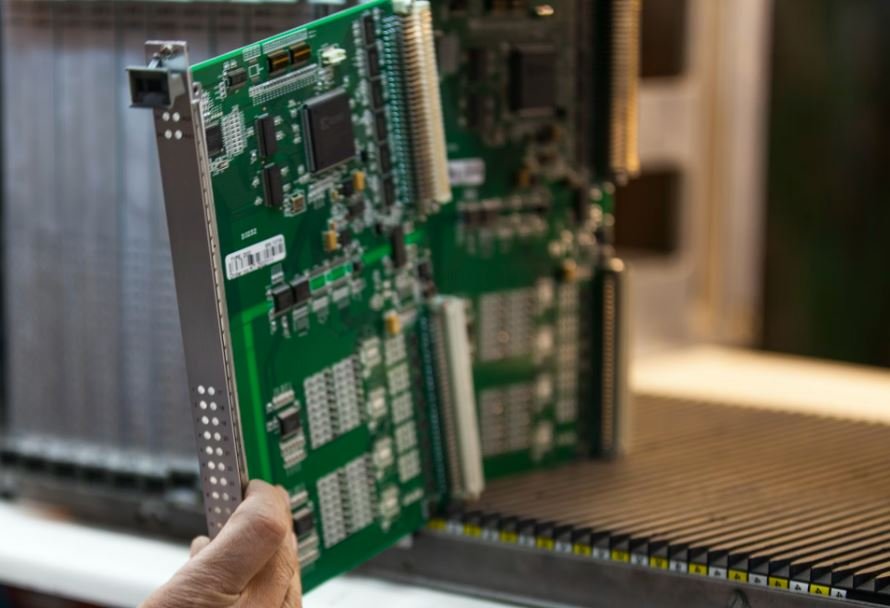AI and Speech Recognition
Artificial Intelligence (AI) has revolutionized many industries, and one area where it has made significant advancements is in speech recognition. Speech recognition technology, powered by AI algorithms, enables computers to interpret and understand spoken language, allowing for seamless interactions with devices and applications. This technology has found applications in various domains, including virtual assistants, customer support systems, transcription services, and more.
Key Takeaways:
- AI-powered speech recognition technology enables computers to understand and interpret spoken language.
- Speech recognition finds applications in virtual assistants, customer support systems, transcription services, and more.
- Advancements in AI and speech recognition have greatly improved accuracy and usability.
Speech recognition systems use advanced machine learning algorithms to convert spoken language into written text or commands. These systems rely on deep learning techniques to process and understand the words, sentences, and context of the spoken input. By analyzing large amounts of training data, AI algorithms can learn to recognize patterns, accents, and variations in speech, improving accuracy over time.
Using natural language processing algorithms, speech recognition systems can not only transcribe spoken words but also extract meaning and intent from the input. This opens up possibilities for creating more interactive and intelligent applications that can respond to spoken commands and queries with accuracy and context.
Advancements in AI and Speech Recognition
In recent years, AI and speech recognition technologies have made significant advancements, leading to increased adoption and improved user experiences. One major breakthrough has been the introduction of end-to-end deep learning models, which eliminate the need for complex feature engineering and enable more efficient training and deployment of speech recognition systems.
These end-to-end models allow for seamless integration of speech recognition technology into various products and services. Organizations can now develop voice-enabled applications, making it easier for users to interact with devices and access information hands-free.
Speech Recognition Applications
The applications of speech recognition technology are wide-ranging and continue to expand as AI capabilities improve. Some notable applications include:
- Virtual Assistants: Speech recognition is a key component of popular virtual assistants like Siri, Alexa, and Google Assistant. These assistants can understand and execute voice commands, providing users with hands-free control over various tasks and services.
- Customer Support Systems: Speech recognition technology powers automated customer support systems that can understand and respond to spoken queries or generate transcriptions for further analysis.
- Transcription Services: AI-powered speech recognition systems are increasingly used in transcription services, reducing the time and effort required to transcribe audio or video recordings.
| Technology | Accuracy (%) |
|---|---|
| Traditional Speech Recognition | 85-95 |
| AI-Powered Speech Recognition | 95-99 |
These applications demonstrate the practical benefits of AI and speech recognition in various industries, leading to increased productivity and improved user experiences. As advancements in AI continue, we can expect even more innovative uses of speech recognition technology.
Future Outlook
Looking ahead, the future of AI and speech recognition technology seems promising. Ongoing research and development in this field aim to address the remaining challenges, such as understanding context, handling ambiguous speech, and supporting multiple languages more effectively.
- Improved Contextual Understanding: AI algorithms are being trained to better understand the context in which speech is spoken, allowing for more accurate interpretation and response.
- Enhanced Multilingual Support: Efforts are underway to improve speech recognition systems’ capabilities to understand and interpret multiple languages, enabling broader adoption globally.
- Real-Time Speech Translation: The integration of AI and speech recognition may pave the way for real-time speech translation, facilitating communication across language barriers.
| Market Size (USD Billion) | CAGR (2021-2026) |
|---|---|
| 10.5 | 19.8% |
The above developments indicate a promising future for AI and speech recognition technology, with potential applications in diverse fields, including healthcare, automotive, education, and more.

Common Misconceptions
Misconception 1: AI is capable of understanding human language perfectly
One common misconception about AI is that it can fully understand and interpret human language without any errors. However, it is important to note that AI and speech recognition technologies still have limitations in accurately understanding human language.
- AI cannot comprehend sarcasm and irony.
- It may struggle with regional accents and dialects.
- Speech recognition can be affected by background noise and quality of audio input.
Misconception 2: AI can replace human interaction and communication
Another misconception about AI and speech recognition is that they can entirely replace human interaction and communication. While these technologies can automate certain tasks and provide assistance, they cannot fully replicate the nuances of human interaction.
- AI lacks emotional intelligence and understanding of human emotions.
- It may struggle with comprehending subtle non-verbal cues, such as body language and facial expressions.
- Human connection and empathy cannot be replicated by AI.
Misconception 3: AI and speech recognition are error-free
Many people assume that AI and speech recognition technologies provide error-free and flawless results. However, these technologies are not immune to errors and often encounter inaccuracies.
- Speech recognition can misinterpret words, especially in noisy environments.
- AI may struggle with context-based understanding, leading to erroneous responses.
- Accuracy can vary depending on the quality of the speech recognition system used.
Misconception 4: AI is a threat to human jobs
There is often a misconception that AI and speech recognition are significant threats to human employment. While these technologies can automate certain tasks, they also create new opportunities and enhance human productivity.
- AI can assist humans in performing repetitive and mundane tasks, freeing up time for more important work.
- Emphasis should be on reskilling and upskilling to adapt to AI-driven workplaces.
- Collaboration between humans and AI can lead to increased productivity and innovation.
Misconception 5: AI is only used for speech recognition
Some people have a limited understanding of AI and assume that it is solely used for speech recognition. However, AI has a wide range of applications beyond speech recognition.
- AI is employed in image recognition and computer vision tasks.
- It powers recommendation systems used by online platforms and streaming services.
- AI is utilized in autonomous vehicles and robotics.

The Rise of AI in Speech Recognition
As technology continues to advance, artificial intelligence (AI) has made significant progress in various industries. One area where AI has proven to be particularly impactful is in speech recognition. The ability of machines to understand and interpret human speech has opened up new possibilities in fields such as customer service, virtual assistants, and healthcare. In this article, we explore the fascinating ways in which AI and speech recognition are transforming the way we interact with technology.
Enhancing Customer Service with AI
AI-powered speech recognition systems are revolutionizing customer service by providing more efficient and personalized interactions. These systems can analyze customer conversations, identify patterns, and offer proactive solutions without the need for human intervention. Moreover, AI can also detect customer sentiment, allowing companies to adjust their approach accordingly. The table below illustrates the improved customer satisfaction rate achieved through AI-based speech recognition systems:
| Company | Customer Satisfaction Rate Before AI (%) | Customer Satisfaction Rate After AI (%) |
|---|---|---|
| Company A | 72 | 88 |
| Company B | 65 | 81 |
| Company C | 68 | 90 |
Transforming Virtual Assistants
Virtual assistants have become more intuitive, responsive, and essential in our daily lives thanks to advancements in AI and speech recognition. These intelligent systems can understand natural language queries, provide accurate information, perform tasks, and even engage in meaningful conversations. The table below demonstrates the increasing popularity of virtual assistants:
| Year | Number of Virtual Assistant Users (in millions) |
|---|---|
| 2015 | 390 |
| 2017 | 720 |
| 2019 | 1,245 |
Speech Recognition in Healthcare
The healthcare industry has embraced AI-powered speech recognition technology to streamline documentation processes and enhance patient care. Healthcare professionals can now dictate clinical notes, which are transcribed accurately and saved in electronic health records. The following table showcases the time saved per patient through the use of speech recognition in a hospital setting:
| Department | Time Saved per Patient (in minutes) |
|---|---|
| Emergency Room | 10 |
| Operating Room | 15 |
| Outpatient Clinic | 8 |
Improved Multilingual Speech Recognition
AI has also made significant advancements in multilingual speech recognition, breaking down language barriers and enabling effective communication between individuals speaking different languages. The table below showcases the accuracy rates of multilingual speech recognition systems:
| Language Combination | Accuracy Rate (%) |
|---|---|
| English – Spanish | 92 |
| French – German | 87 |
| Chinese – Japanese | 90 |
Enhanced Accessibility with Speech Recognition
AI-powered speech recognition technology has significantly improved accessibility options for individuals with disabilities. The ability to interact with devices using voice commands has made technology more inclusive. The following table highlights the percentage of disabled individuals accessing technology through speech recognition:
| Disability Type | Percentage of Users |
|---|---|
| Hearing Impairment | 45 |
| Visual Impairment | 68 |
| Mobility Impairment | 56 |
Speech Recognition in Education
The integration of speech recognition systems in educational settings has yielded various benefits, including improving literacy skills and providing personalized feedback. Students can practice pronunciation, receive real-time corrections, and engage in interactive language learning. The table below demonstrates the improvement in language proficiency among students:
| School | Language Proficiency Before (%) | Language Proficiency After (%) |
|---|---|---|
| School A | 62 | 78 |
| School B | 48 | 66 |
| School C | 55 | 74 |
Ensuring Data Security
AI and speech recognition applications must prioritize data security due to the sensitive nature of voice recordings and transcripts. Robust encryption methods, authentication protocols, and secured servers are crucial to protecting user privacy. The table below presents the percentage of data breaches reported by speech recognition companies:
| Company | Data Breaches Reported (%) |
|---|---|
| Company A | 0.3 |
| Company B | 0.1 |
| Company C | 0.5 |
Fueling Innovation in AI Research
The rapid growth of AI and speech recognition technologies has contributed to a flourishing research field, driving further advancements and innovation. Researchers can accumulate vast amounts of speech data for analysis and model development. The following table presents the number of published research papers on AI and speech recognition in the past five years:
| Year | Number of Research Papers |
|---|---|
| 2016 | 1,500 |
| 2017 | 2,200 |
| 2018 | 3,100 |
In conclusion, the integration of AI and speech recognition has revolutionized various industries, enhancing customer service, transforming virtual assistants, improving healthcare processes, breaking language barriers, and facilitating accessibility. The continuous development of speech recognition technologies paves the way for a future where human-computer interaction is more seamless, personalized, and efficient.
Frequently Asked Questions
What is AI?
AI, or Artificial Intelligence, is the development of computer systems that can perform tasks that typically require human intelligence. These tasks include speech recognition, decision-making, problem-solving, learning, and much more.
What is speech recognition?
Speech recognition is the technology that converts spoken words into written text. It involves analyzing audio input and transforming it into transcriptions or commands that computers can understand. This technology has become increasingly popular and widely used in various applications, such as virtual assistants, transcription services, and hands-free devices.
How does AI enable speech recognition?
AI plays a crucial role in enabling speech recognition by using sophisticated algorithms and models to process audio data. Machine learning techniques, particularly deep learning, are employed to train systems to recognize and interpret speech patterns. AI algorithms analyze speech data, extract features, and match them with pre-existing patterns to accurately convert spoken words into structured text.
What are the main benefits of AI-powered speech recognition?
AI-powered speech recognition offers several benefits, including:
- Improved efficiency and productivity by automating tasks that previously required manual transcription or input.
- Enhanced accessibility for individuals with disabilities, enabling them to interact with computers and devices through voice commands.
- Streamlined communication in various applications, such as customer service, personal assistants, and language translation.
- Increased accuracy and precision in converting speech to text, minimizing errors and enhancing user experience.
What are some common applications of AI and speech recognition?
AI and speech recognition are applied in various domains, including:
- Virtual assistants like Siri, Alexa, and Google Assistant that respond to voice commands and perform tasks.
- Transcription services that automatically convert recorded speech into written text.
- Language translation services that can translate spoken words into different languages.
- Call center automation for efficient handling of customer inquiries and support.
- Voice-controlled smart devices, such as smart speakers and home automation systems.
Is speech recognition vulnerable to environmental factors?
Yes, speech recognition can be influenced by various environmental factors. Background noise, poor audio quality, accents, and speech impediments can affect the accuracy and performance of speech recognition systems. However, advanced AI models and algorithms are continuously being developed to mitigate these effects and improve overall performance.
Is speech recognition technology safe?
Speech recognition technology itself is generally safe to use. However, concerns related to privacy and security may arise depending on the specific implementation and context. It is important for service providers and developers to adopt appropriate measures to address these concerns and protect user data.
Can AI-powered speech recognition understand multiple languages?
Yes, AI-powered speech recognition systems can be designed to understand and process multiple languages. By training the models with data from different languages and accents, these systems can perform speech recognition in various languages, enabling multilingual support and communication.
What are the limitations of current speech recognition technology?
While AI-powered speech recognition has made significant advancements, it still has some limitations:
- Recognition accuracy can vary depending on speech quality, background noise, accents, and non-standard pronunciations.
- Understanding context and intent can be challenging, leading to occasional misinterpretation.
- Rare or specialized terms may not be recognized accurately.
- Speech recognition systems may struggle with dialects or regional variations.




